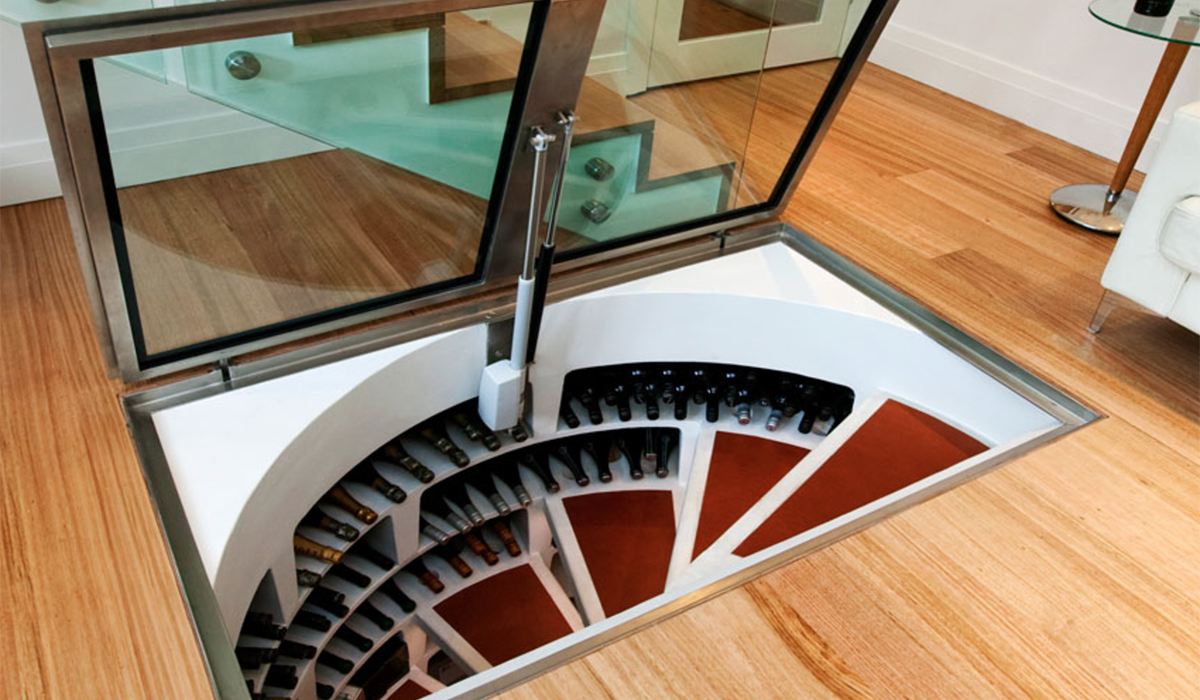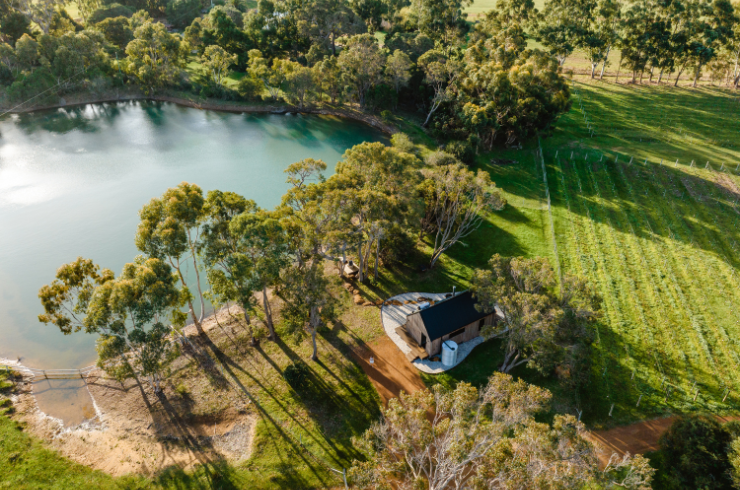Not everyone is able to excavate under their house or dedicate a room solely to wine, but almost any space in a house can be converted into a cellar, according to Robert Rolls of Cellar Creations on Victoria’s Mornington Peninsula. “If you’re eliminating structural works and not creating a new space, you’ve got a good cost-saving point,” he says. “We sometimes also pinch a section of a room.”
A critical consideration, Robert says, is that once a cellar is fully insulated, it will have lost some space. Ensuring easy access to the area is also essential, and ceilings need to be able to incorporate piping for ducted climate control systems, which are commonly installed in cellars both above and below the ground. “The unit can be remote, and the system takes care of the temperature and humidity levels,” Robert says.

If you’re eliminating structural works and not creating a new space, you’ve got a good cost-saving point.
Insulation is essential for all cellar spaces, as are thermal breaks, which prevent condensation. And when going underground, Robert says a smart approach that considers structural, water proofing and drainage solutions is imperative, so a registered builder should be engaged from the outset. After this initial work, a cellar space is ready for insulation, a climate-control system and fitting out.
“Putting in a basement is much more common than 10 years ago, and customised design and creative use of space is at the forefront of our cellars,” Robert says. He suggests going below ground is ideal for new homes, especially with city property sizes often being small, also coming with green space requirements. “Going underground can have its challenges, but anything is possible.”

Costs and other factors
Costs will always vary according to the project, but Neil Smallman of Sydney-based Signature Cellars is always upfront about ballpark figures so people understand the prices involved. Bespoke cedar wine racking, for example, can cost up to $25,000 alone. Neil suggests a medium-scale wine room costs around $55,000 to $65,000, but some can cost up to $200,000, depending on size, scope and fit-out.
Like Robert, Neil says it can be challenging to allocate enough space for a cellar’s services, such as piping, ducting, electrical and drainage, and climate-control systems also need access to an external wall. From a wine perspective, it’s also important to assess exactly what makes up your wine collection. “Bottles are different shapes and sizes, from half-bottles to magnums, and a lot of serious collectors also keep wine in wooden boxes,” he says. “Finding the balance between a great aesthetic and the most practical storage capacity is the key.”
Overall, engage experienced professionals early and plan well from the start. “We’ve had customers who’ve had their builder fit out a cellar with insulation, but not made any provision for the climate control or electrics, so we’ve had to rip it out and replace it to fit the right services,” Neil says. “Other customers have ordered wine racking online or from overseas only to find it doesn’t fit once the room has been properly insulated.”

The check list
Lee Hardcastle of Brisbane’s Enigma Interiors shares his tips on creating the ultimate home cellar:
• Consider your bottle sizes and their shapes
• Use materials that won’t ruin wine labels
• Allow space for your collection to keep growing
• Maximise bottle capacity by using a cellar’s full height and over-engineering shelving
• If you want to entertain in there, allow for serving areas and glassware storage
• Consider space for boxes before bottles are transferred to racks
• Choose natural materials over synthetics to reduce chemical odours
• Consider security, even if it’s simply a door that locks
• Allow space for a wine cabinet to keep bottles at ready-to-drink temperatures
• Consider a feature display for your most prized bottles
• Section the space to categorise your wines – by style or region, when bottles are ready, or your preferred organisational approach
This article first appeared in a previous cellaring edition of Halliday magazine.
Become a member today to receive the print publication and digital access.






